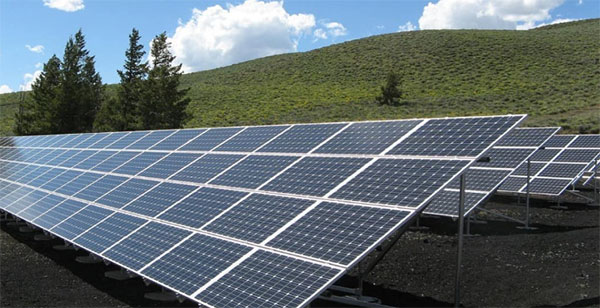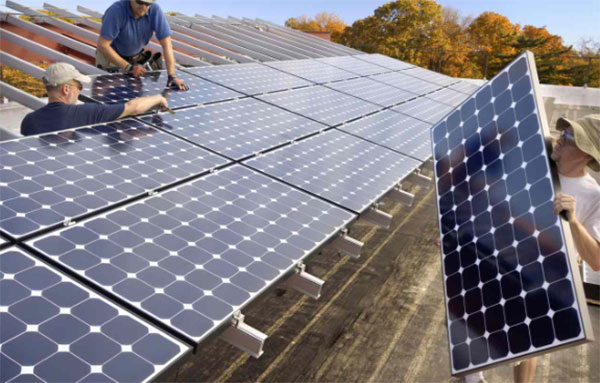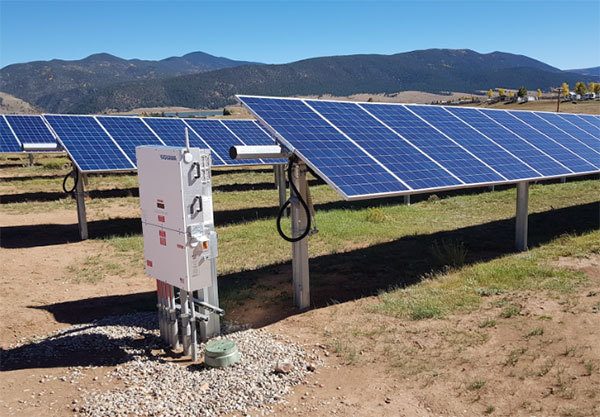Description
The minimum distance between solar panel rows depends on panel size, tilt angle, geographic location, and sun path variations.
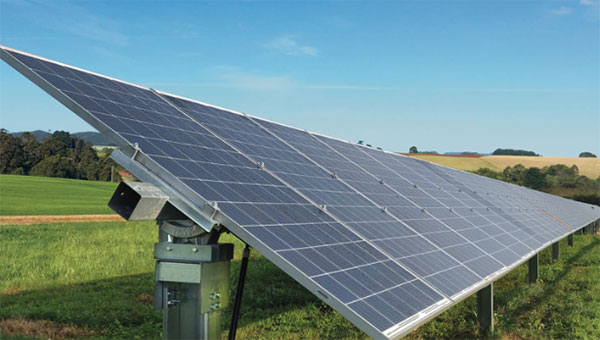
Fundamentals of Solar Panel Installation
The installation of solar panels is a critical process that involves strategic planning and precise execution. This stage lays the foundation for the effective operation and efficiency of the solar energy system.
Understanding Solar Panel Spacing
Solar panel spacing is essential for maximizing energy production and ensuring the longevity of the solar array. Appropriate spacing prevents shading of panels by others, which can significantly reduce the system's overall efficiency. Spacing depends on multiple factors such as the angle of the sun, geographic location, and the physical dimensions of the panels.
Key aspects include:
- Ensuring Adequate Sunlight: Panels need unobstructed exposure to sunlight. The spacing must allow each panel to receive optimal sunlight throughout the day.
- Avoiding Shading: As the sun's position changes, shadows from one row of panels should not fall on another. This requires calculating the sun's path and adjusting the spacing accordingly.
Factors Influencing Row Spacing
Several factors dictate the minimum distance between rows of solar panels. Understanding these elements is crucial for an efficient solar panel setup.
- Panel Tilt and Orientation: The tilt angle of the panels affects the amount of sunlight they receive. Panels tilted at steeper angles may require more spacing to avoid casting shadows on adjacent rows.
- Geographical Location: Locations closer to the equator may require less spacing due to the higher angle of the sun, while locations with lower sun angles need more significant spacing to prevent shading.
- Seasonal Variations: The sun's angle changes with seasons, affecting shadow length and direction. Installers must consider the worst-case scenario, usually winter, when designing panel layouts.
Proper installation not only enhances the
efficiency of solar panels but also extends their
lifespan and optimizes the overall
cost of the solar energy system. High-quality materials and expert installation techniques are pivotal in ensuring the solar panels operate at maximum efficiency, translating into significant energy savings over time.

Technical Considerations for Row Spacing
The spacing of solar panel rows is a complex process involving various technical aspects. These considerations are pivotal in determining the overall efficiency and productivity of the solar panel system.
Impact of Panel Tilt and Size
The tilt angle and the size of solar panels play a crucial role in determining the optimal row spacing.
- Tilt Angle: The angle at which panels are installed affects the amount of sunlight they capture. For instance, panels tilted at a 30-degree angle may require a different spacing compared to those at a 45-degree angle. This angle adjustment can increase the system's efficiency by up to 20%.
- Panel Size: Larger panels might cast longer shadows, necessitating increased row spacing. For example, a panel measuring 2 meters in length may require an additional 0.5 to 1 meter of spacing compared to a smaller panel.
Optimal panel tilt and size must balance sunlight capture and space utilization to maximize the power output per square meter, directly impacting the system's cost-effectiveness and power
capacity.
Sun Angle and Seasonal Variations
The sun's angle and seasonal changes significantly influence solar panel row spacing.
- Sun Angle: The angle of the sun varies with geographic location. In regions closer to the equator, the sun is higher in the sky, reducing the length of shadows cast by the panels. Conversely, locations at higher latitudes experience lower sun angles, requiring wider spacing between rows to avoid shading.
- Seasonal Variations: The sun's path changes with seasons, affecting shadow length and direction. Installers must consider the lowest winter sun angle to avoid shading during times when sunlight is already limited.
Calculating the sun angle and accounting for seasonal variations ensures that solar panels maintain optimal exposure to sunlight throughout the year, which is essential for achieving high energy
efficiency and cost savings.
Optimizing Energy Efficiency
Optimizing energy efficiency in solar panel installations is a key goal that involves careful consideration of several factors. These include balancing shade and sunlight exposure and making precise calculations to achieve maximum energy output.
Balancing Shade and Sunlight Exposure
Balancing shade and sunlight is critical for optimal solar panel performance.
- Minimizing Shade: Even partial shading can significantly reduce the energy output of solar panels. It's crucial to design the layout to minimize shading from surrounding trees, buildings, and other panels. Implementing a spacing that allows each panel to have unobstructed access to sunlight throughout the day enhances overall efficiency.
- Maximizing Sunlight Exposure: The orientation and angle of the panels should be adjusted to maximize sunlight exposure. This might involve positioning panels towards the south in the Northern Hemisphere, and towards the north in the Southern Hemisphere, with an inclination angle that matches the latitude of the location for optimal sun exposure.
Striking the right balance between avoiding shade and maximizing sunlight is essential for maintaining high energy
efficiency and ensuring the panels generate maximum power throughout the day.
Calculations for Maximum Energy Output
Precise calculations are needed to determine the ideal setup for maximum energy output.
- Energy Output Calculations: These calculations involve considering the panel specifications, such as their power rating, which typically ranges from 250 to 400 watts per panel. Factors like the total number of sunlight hours in the location, the angle of the sun, and the efficiency rating of the panels, which can vary from 15% to 22%, are also critical.
- Spacing Calculations: To avoid shading, the spacing between rows must be calculated based on the height and tilt angle of the panels, the latitude of the location, and the lowest winter sun angle. For example, a system in a location with a latitude of 35 degrees might require a spacing of approximately 1.5 times the height of the panels when tilted at an angle matching the latitude.
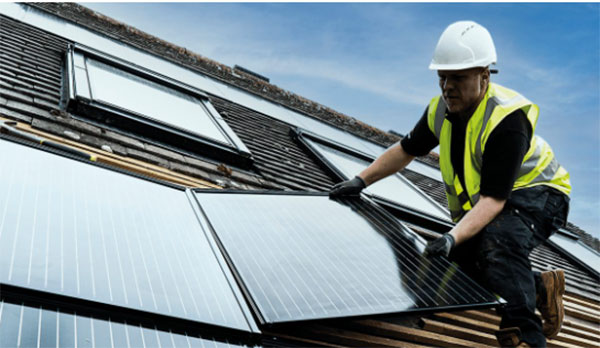
Site-Specific Layout Planning
When designing solar panel installations, site-specific considerations are paramount. The planning phase must integrate a thorough understanding of the topographical and climatic characteristics of the installation site to optimize energy production.
Topographical Influences on Panel Placement
The physical landscape plays a significant role in determining the optimal placement of solar panels.
- Terrain Features: Hills, valleys, and other terrain features can influence the amount of sunlight that reaches the panels. For instance, a south-facing slope in the Northern Hemisphere can increase sun exposure, potentially enhancing the panels' efficiency by up to 10% compared to flat land.
- Obstruction Analysis: It's essential to evaluate potential obstructions like trees or buildings that might cast shadows on the panels. This analysis includes measuring the angle and length of shadows during different times of the year to determine the best panel placement.
Careful topographical assessment ensures that panels are situated in locations that maximize sunlight exposure, leading to higher energy output and better return on investment.
Adjusting for Local Climate Conditions
Local climate conditions significantly impact solar panel performance.
Sunlight Intensity: Regions with higher sunlight intensity can generate more power. For example, panels in desert climates might produce up to 50% more energy than in cloudy, northern regions.
Temperature Effects: Solar panels operate most efficiently at moderate temperatures. Excessive heat can reduce panel
efficiency, necessitating installations in cooler, shaded areas in hot climates.
Weather Considerations: Frequent snowfall or heavy rains can affect panel performance. Panels in snowy regions might need steeper angles for snow to slide off, maintaining their efficiency.
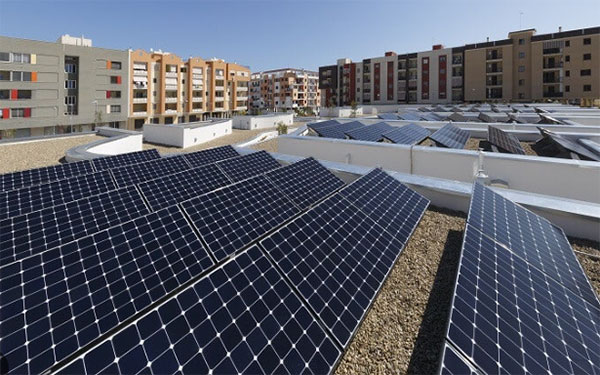
Installation Best Practices
Adhering to best practices during the installation of solar panels is crucial for maximizing efficiency, ensuring safety, and optimizing long-term performance. These practices vary depending on whether the setup is for residential or commercial purposes.
Guidelines for Residential vs. Commercial Setups
The approach to installing solar panels differs significantly between residential and commercial environments.
- Residential Installations: Typically involve smaller-scale systems, ranging from 5 kW to 20 kW. The focus is on maximizing space utilization, often on rooftops. It's essential to ensure the roof's structural integrity and to angle the panels for optimal sun exposure, which is usually between 30 to 40 degrees in most regions.
- Commercial Installations: Often larger, ranging from 100 kW to multiple megawatts. These setups can cover vast areas of land or large rooftops. Commercial projects require more robust infrastructure support, including heavy-duty mounting systems and more complex electrical integrations. The cost-effectiveness is a significant consideration, aiming to achieve the lowest levelized cost of electricity (LCOE).
Selecting the right equipment and design is crucial for both residential and commercial setups. High-quality panels with a high
efficiency rating (around 18% to 22%) and durable mounting systems are essential for long-term reliability and performance.
Case Studies on Efficient Solar Panel Layouts
Examining successful solar panel installations provides valuable insights into efficient layout designs.
Case Study 1: A residential installation in California, where a 7 kW system was installed. The panels were arranged at a 35-degree angle, facing south, maximizing sun exposure throughout the year. This setup produces approximately 10,000 kWh annually, covering nearly 100% of the household's energy needs.
Case Study 2: A commercial solar farm in Arizona with a capacity of 50 MW. The installation uses tracking systems that adjust the panels' angle to follow the sun, increasing the energy output by up to 25% compared to fixed systems. This farm generates approximately 120,000 MWh per year, enough to power 12,000 homes.





